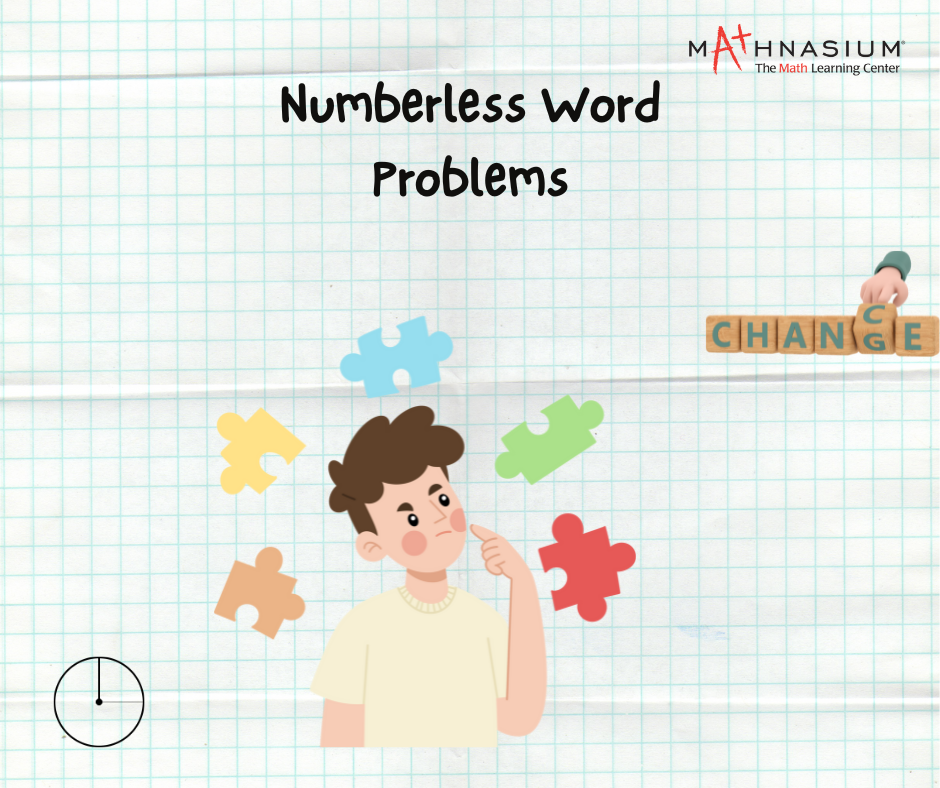In the realm of mathematics education, a revolutionary approach has been gaining traction, transforming the way students engage with word problems – the power of numberless word problems. Traditionally, math problems were presented numerically, requiring students to compute solutions using formulas and algorithms. However, educators are now recognizing the effectiveness of introducing word problems without numerical values, allowing students to focus on understanding the underlying concepts rather than getting bogged down by calculations.
Numberless word problems are designed to build students' conceptual understanding, problem-solving skills, and critical thinking abilities. By gradually introducing information and prompting students to think about the problem contextually before introducing specific numerical values, educators create a learning environment that encourages active engagement and deep comprehension.
One of the primary advantages of numberless word problems is that they cater to a diverse range of learners. Students who may struggle with traditional, numerical-heavy word problems often find relief in the gradual unfolding of information. Without the pressure of calculations, they can concentrate on comprehending the problem's context, breaking it down into manageable parts, and formulating strategies for a solution.
Moreover, numberless word problems promote a growth mindset, fostering a positive attitude towards problem-solving. Students learn that making sense of a problem is the first step, and numerical values come later. This shift in perspective encourages them to embrace challenges, view mistakes as opportunities to learn and approach problem-solving with confidence.
Another key benefit is the enhancement of communication and collaboration skills. As students discuss numberless word problems in groups or with the whole class, they articulate their thoughts, listen to other's perspectives, and collectively develop strategies for approaching problems. This collaborative learning environment mirrors real-world scenarios where effective communication is essential for problem-solving.
Furthermore, numberless word problems facilitate a smoother transition from concrete to abstract thinking. Starting with a concrete, context-rich problem and gradually abstracting it by introducing numerical values helps students bridge the gap between the real-world context and the symbolic representation of mathematics. This method supports a more profound understanding of mathematical concepts and lays the foundation for advanced problem-solving skills.
In addition to aiding student comprehension, educators find that numberless word problems offer a valuable tool for assessment. By observing students' responses to the contextual aspects of a problem, teachers gain insights into their thought processes, identify misconceptions, and adjust their instructional strategies accordingly. This formative assessment approach ensures that learning is adaptive, and tailored to individual student needs.
Let’s solve the numberless word problem from the post which was this:
Imagine a group of friends going to a movie. Some friends have tickets, and a few more join them as they enter. Now, everyone has a ticket. How many friends were originally there, and how many joined later?
Understand the Context:
Imagine the situation with a group of friends going to a movie.
Some friends already have tickets, and a few more join them as they enter.
Identify the Unknowns:
Determine the original number of friends who had tickets.
Find out how many friends joined later.
Introduce Numbers:
Assign variables to the unknowns. Let's say the original number is x (number of friends with tickets) and the number who joined later is y.
Set Up an Equation:
x+y =Total number of friends
Solve the Equation:
Depending on additional information or specific numbers given in the problem, you can proceed to solve the equation to find the values of x and y.
By approaching the problem in this way, students develop a deeper understanding of the scenario before introducing specific numerical values, promoting a more robust grasp of mathematical concepts.
The power of numberless word problems lies in their ability to transform the learning experience for students, making mathematics more accessible, engaging, and meaningful. By prioritizing conceptual understanding over rote calculations, educators empower students to become critical thinkers and problem solvers, skills that extend far beyond the realm of mathematics. As the educational landscape continues to evolve, the integration of numberless word problems stands as a testament to the innovative approaches that shape the future of effective and inclusive learning.



 (516) 400-6284
(516) 400-6284








